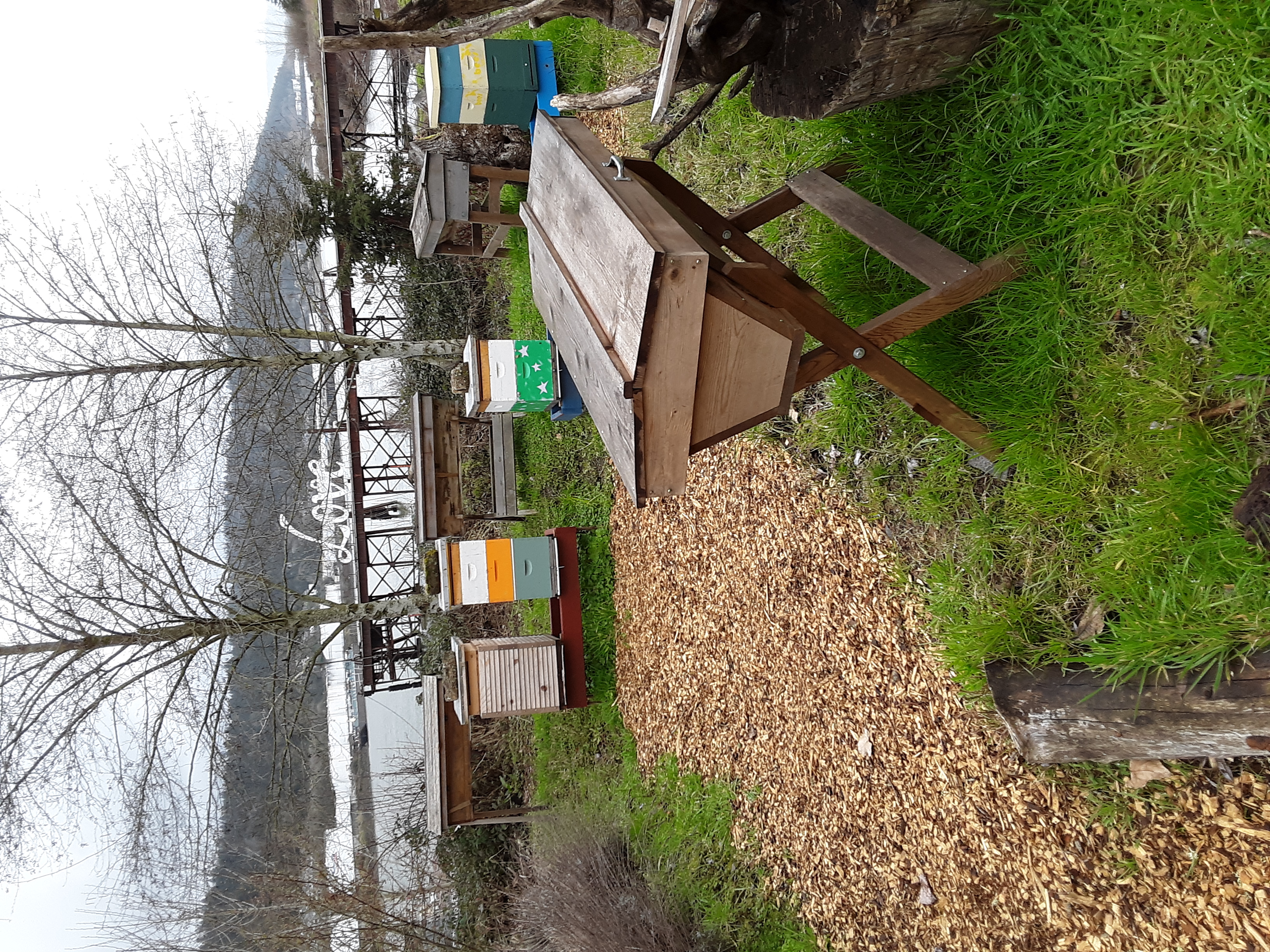No or slow colony growth; above normal loss level with sudden accumulation of dead bees in front of colony entrance or within colony itself (dead bees usually fall to bottom board); sudden removal of dead brood by house bees; sudden death of entire colony. Adult bees having difficulty flying to or from colony entrance, spinning in dirt in front of colony, or exhibiting trembling or wobbling movements. Weakening of colony; bees pulling out and discarding bee bread following a colony weakening or dead bee event.
Chronic pesticide damage is difficult to diagnose. Signs include shortened life of adults, weakened colony unable to cover total brood, and lack of surplus honey storage.
Pesticides, including herbicides and fungicides, have been shown to harm honey bees, killing foragers, damaging bee brood, or killing entire colonies.
There are over 35,000 pesticide products, 20% of which are considered harmful to bees. The first report of pesticide damage to bee colonies dates to at least 1881. Arsenic compounds (Paris green; London purple) applied to fruit were likely the culprit. The first law to help protect honey bees from pesticides was in New York in 1948. DDT is one compound that was relatively harmless to bees.
Much focus today is on the most widely used pesticide group, the neonicotinoids, which generally are toxic to individual bees, though their colony-wide effects are not as clear-cut.
Honey bee pesticide poisoning exposure may occur within the hive itself (beekeeper-applied and delayed responses from stored honey or bee bread) or via environmental exposure, primarily through adult foraging. Some pesticides cause acute (immediate poisoning) to non-targets like honey bees and pollinating insects, while others may cause long-term (chronic) damage. Specifically, chronic problems may be developmental: reduced reproductive fitness, poorer overwintering and other colony functions, or behavioral modifications to individuals that may also impact the entire colony.
Bee colonies suffering from pesticide poisoning may display a variety of signs, depending upon extent of poisoning, pesticide involved, and stress level of the bees. Acute loss may occur to: foragers (sudden loss of forager population and/or a pile of dead bees at colony entrance); to brood (sudden decrease in brood, with bees carrying larvae and pupae from cells that may persist beyond one generation of brood); and to both adults (forager and hive bees) and brood (usually evidenced by a pile of dead adult bees and brood both outside entrance and on bottom of hive). Acute loss may also result in outright loss of an entire colony or colonies in an apiaryapiary:
a place where beehives and beekeeping equipment are located; also called a bee yard. An out-apiary is a site away from the owner’s residence. , though usually not every single colony will be lost or even show signs of adult or brood loss.
, though usually not every single colony will be lost or even show signs of adult or brood loss.
Chronic bee loss is elusive to determine and presents general signs characteristic of other causes. Dwindling colony populations (when other colonies are doing better), weak or stressed colonies, poor overwintering, and/or colonies with parasitic mite syndrome (PMS) may be suffering from pesticide exposure. Following acute or chronic events, bees cleaning bee bread from cells is often evident.
starvation, parasitic mite syndrome
Traynor KS, et al. 2021. Pesticides in honey bee colonies: Establishing a baseline for real world exposure over seven years in the USA. Environmental Pollution. 279: 116566. https://www.sciencedirect.com/science/article/pii/S0269749121001445
University of Georgia. Protecting Pollinators from Pesticides. University of Georgia Bee Program. Accessed 2023. https://bees.caes.uga.edu/bees-beekeeping-pollination/pollination/pollination-protecting-pollinators-from-pesticides.html
US EPA. 2018. Understanding how pesticide exposure affects honey bee colonies. United States Environmental Protection Agency. Accessed 2023. https://www.epa.gov/sciencematters/understanding-how-pesticide-exposure-affects-honey-bee-colonies
Beyond Pesticides. Accessed 2023. https://beyondpesticides.org
National Pesticide Information Center. 2020. Pesticide issues for the backyard beekeeper. National Pesticide Information Center. Accessed 2023. http://npic.orst.edu/envir/yardbees.html
Hooven L, Sagili R, Johansen E. 2016. How to reduce pesticide poisoning from pesticides. Oregon State University Extension PNW 591. Accessed 2023. https://catalog.extension.oregonstate.edu/pnw591